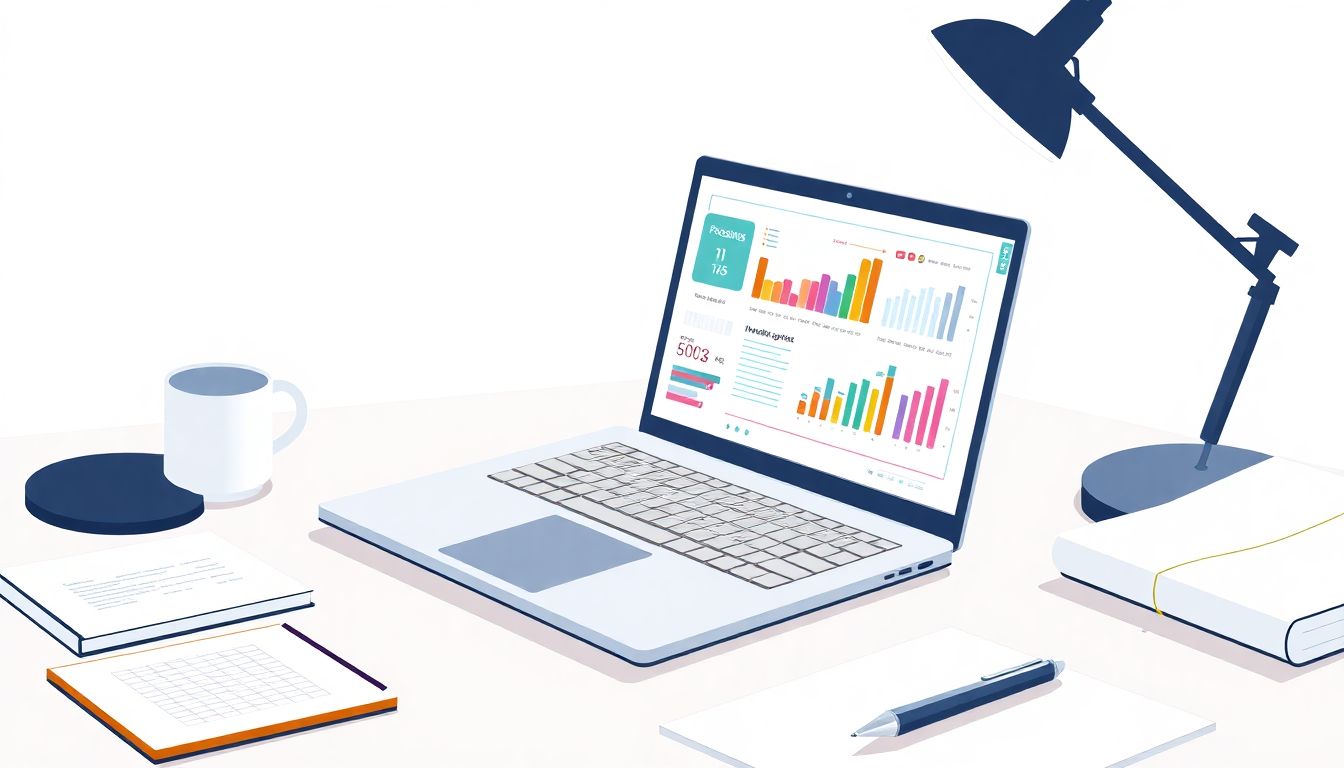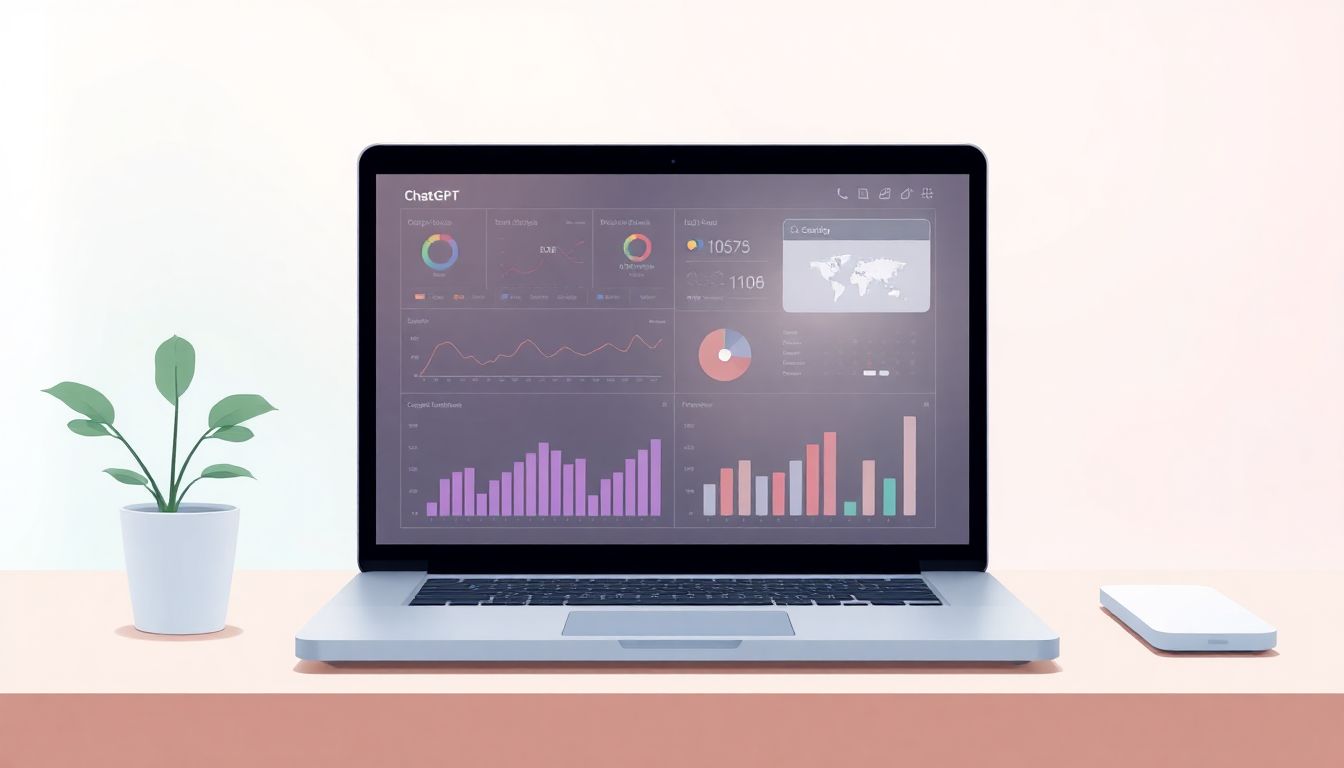Big Data can feel overwhelming, right? With endless streams of information, making sense of it all can be a daunting task. Many of us struggle with understanding how to extract valuable insights from huge datasets without feeling lost in a sea of numbers and graphs.
But what if I told you there’s a way to simplify this process? By leveraging tools like ChatGPT, you can turn those intimidating data mountains into manageable insights. Stick around, and I’ll show you how this AI powerhouse can help you interpret complex data effortlessly.
From analyzing trends to creating stunning visualizations, there’s so much to explore. We’ll dive into real-world applications and best practices for using ChatGPT in your data journey. Get ready to transform the way you approach Big Data!
Key Takeaways
- Big Data can be challenging to understand, but tools like ChatGPT simplify interpretation.
- ChatGPT uses natural language processing to provide clear insights from complex data.
- AI speeds up data analysis, identifying patterns and trends much faster than traditional methods.
- You can ask specific questions to ChatGPT to gain actionable insights from your datasets.
- Data visualization tools within ChatGPT help convert numbers into impactful visuals easily.
- Automating reports and summaries with ChatGPT saves time and ensures consistent presentation of insights.
- Regularly revisiting and analyzing data helps keep insights relevant and useful for decision-making.

How ChatGPT Helps You Interpret Big Data Analytics
Big data analytics can be overwhelming, but tools like ChatGPT can make it much easier to interpret and understand.
ChatGPT uses natural language processing to break down complex data into friendly, understandable insights.
This capability is vital for individuals and businesses alike who need actionable insights without wading through all the intricacies of data science.
By leveraging ChatGPT, users can ask insightful questions and receive concise answers, making data interpretation accessible to everyone.
Here are some effective prompts you can use with ChatGPT for interpreting big data:
- “Explain the key trends in the dataset I provided.”
- “Summarize the insights from the following data points: [insert data points].”
- “What patterns can you identify from this large dataset?”
- “How do these data trends affect business strategy?”
Understanding Big Data and Its Importance
Big data refers to the massive volume of structured and unstructured data that inundates businesses daily.
It is characterized by three main attributes: volume, variety, and velocity.
Understanding these elements is crucial for making data-driven decisions that can significantly influence a company’s direction.
Volume relates to the sheer amount of data generated; variety indicates the different formats it can take, like text, images, or videos; and velocity refers to the speed at which data is processed.
The importance of big data lies in its ability to provide actionable insights that foster competitive advantage, enhance customer experience, and optimize operations.
By tapping into big data, businesses can predict customer behaviors and market trends.
The Role of AI in Data Analysis
AI is transforming the landscape of data analysis through automation and enhanced predictive capabilities.
Using algorithms, AI can sift through large datasets far more quickly than traditional methods.
This speeds up the identification of patterns and trends significantly.
Machine learning, a subset of AI, continuously improves the accuracy of predictions by learning from the data it analyzes.
As a practical example, businesses can implement AI algorithms to predict inventory needs based on historical sales data.
Integrating AI-powered tools like ChatGPT allows users to analyze data more intuitively, leading to smarter decision-making.
Try these prompts to see AI’s role in your data analysis:
- “Analyze this dataset and identify any potential anomalies.”
- “What predictive insights can you generate using these data trends?”
- “Explain how machine learning might apply to this data set.”
- “Summarize the key findings of the surrounding data context.”
Using ChatGPT to Analyze Data Trends
Identifying trends is critical in data analysis, and ChatGPT can help you do just that with surprising ease.
Through its data pattern recognition capabilities, you can understand what your data might be signaling about future opportunities or challenges.
For instance, businesses can use ChatGPT to recognize upward or downward trends in sales, customer behaviors, or product performance over time.
By analyzing historical data trends collaboratively, you can make more informed decisions about resource allocation, marketing strategies, and future product development.
Here are some example prompts for analyzing data trends with ChatGPT:
- “Identify trends in this data over the last year.”
- “What seasonal patterns do you see in sales data?”
- “Summarize how customer preferences have shifted based on this dataset.”
- “Spot any anomalies in this trend and provide explanations.”
For more insights on harnessing AI for various applications, check out our article on ChatGPT for Education and explore the innovative uses of ChatGPT in your studies.
Also, if you’re interested in enhancing your creative processes, don’t miss our guide on ChatGPT Prompts for Creative Writing.

Creating Data Visualization with ChatGPT
Data visualization is crucial for understanding complex information, and ChatGPT can assist in creating visuals that make your data easily digestible.
It helps translate numbers and statistics into graphs, charts, and infographics that tell a story.
To utilize ChatGPT for data visualization, you can provide your dataset along with specific instructions about the type of visualization you want.
Here are some prompts to get started:
- “Create a bar chart comparing sales data from the last five years.”
- “Generate a pie chart to illustrate market share percentages from the data I’ve uploaded.”
- “Visualize the trend of monthly website traffic data in a line graph.”
- “Create a scatter plot displaying customer ratings against purchase amounts.”
By using these prompts, you can quickly generate visuals that convey key insights from your data.
Moreover, always remember that effective visuals should be simple yet informative, focusing on the metrics that matter most to your audience.
Generating Insights from Large Datasets
Generating insights from large datasets is where ChatGPT really shines, making it easier to derive actionable information without getting lost in the details.
Often, users struggle to sift through thousands of rows and columns; that’s where prompts come in handy.
You can ask ChatGPT to summarize findings, highlight correlations, or list actionable steps based on the data trends observed.
Try out these prompts to extract valuable insights:
- “Analyze this dataset and identify key insights that could influence our marketing strategy.”
- “Summarize the relationships between variables in this dataset and their impact on sales.”
- “Provide a list of recommendations based on the insights gathered from the data.”
- “Highlight any significant correlations found in this large dataset.”
With these prompts, you can prioritize decision-making based on solid data insights that drive business growth.
Make it a practice to periodically revisit your data analysis and insights for consistent improvements and updates.
Automating Reports and Summaries with ChatGPT
One of the significant advantages of using ChatGPT is its capability to automate report generation and summaries.
This feature not only saves time but also ensures that insights are consistently presented in a structured manner.
You can instruct ChatGPT to create reports based on defined metrics, trends, or specific insights you need to highlight.
Here are prompts you can use for automating reports:
- “Generate a quarterly sales report based on this data, including key trends and insights.”
- “Summarize the main findings from this survey data into a concise report.”
- “Create a weekly performance summary using the attached data.”
- “Automate a report that outlines customer satisfaction trends from the last quarter.”
This level of automation streamlines your workflow, allowing you to focus on strategy while ChatGPT handles the heavy lifting.
To make the most out of this feature, always double-check the reports for accuracy and format to suit your audience’s preferences.

Case Studies: Real-World Applications of ChatGPT in Data Analysis
To truly appreciate the power of ChatGPT in data analysis, it’s helpful to look at some real-world applications.
Many companies have started integrating ChatGPT into their analytics frameworks, leading to notable improvements in efficiency and insight generation.
For instance, a retail chain leveraged ChatGPT to analyze customer purchasing data.
By turning historical sales data into actionable insights, the company could optimize its inventory and marketing strategies.
Another example involves a healthcare organization using ChatGPT to analyze patient data.
This helped identify trends in treatment effectiveness, improving patient outcomes through data-driven decisions.
Here are some prompts you can test out to explore these applications:
- “Provide an example of how ChatGPT could analyze customer feedback data to improve our services.”
- “Show me how ChatGPT can help identify inefficiencies in our current data processes.”
- “Analyze this case study: [insert case study details] and summarize the key insights.”
- “What lessons can we learn from companies using ChatGPT for data analysis?”
These examples highlight how businesses are successfully using ChatGPT to enhance their data analysis capabilities, leading to smarter, informed decisions.
Best Practices for Using ChatGPT in Big Data Analytics
To get the most out of ChatGPT for big data analytics, implementing best practices is crucial.
Start by providing clear and specific prompts to maximize the relevance of the information returned.
Testing multiple variations of prompts can yield different insights, so don’t hesitate to experiment.
Regularly update your dataset to ensure that the analysis reflects the most current trends.
Incorporating feedback loops can help improve the accuracy of insights as you refine your data queries.
Here’s a list of actionable prompts to help you implement best practices:
- “What specific questions should I ask to get the most insights from this dataset?”
- “How should I structure my data for analysis with ChatGPT?”
- “Identify potential improvements in my data analysis process with these results.”
- “Suggest ways to visualize the findings from this analysis.”
By adhering to these practices, you can take full advantage of ChatGPT’s capabilities, leading to enhanced data analyses and insights.
Limitations of ChatGPT in Data Interpretation
While ChatGPT is an impressive tool for data analysis, it’s essential to recognize its limitations.
First, it can struggle with interpreting data that lacks context or clarity.
If datasets are noisy or poorly structured, the insights generated may not be reliable.
Additionally, ChatGPT may sometimes present biased results based on the data it’s trained on.
This emphasizes the need for human oversight in interpreting the outcomes.
When using ChatGPT, consider these prompts to address its limitations:
- “What limitations should I be aware of when using ChatGPT for data insights?”
- “How can I mitigate bias in the data analysis produced by ChatGPT?”
- “Identify potential errors in this dataset that ChatGPT might overlook.”
- “List the types of data analysis ChatGPT is not well-suited for.”
Understanding these limitations helps ensure that you use ChatGPT effectively and supplement its insights with human judgment.
Future of ChatGPT in Data Analytics
The future of ChatGPT in data analytics looks promising as AI technology continues to evolve.
Advancements in algorithms and data processing will allow ChatGPT to provide even more accurate insights.
As it becomes better at understanding context and nuance, users can expect more sophisticated analyses.
Furthermore, an increase in integrated data sources will enhance its ability to derive holistic insights.
Considering these developments, here are some prompts to explore the future of ChatGPT in this field:
- “What emerging trends in AI could impact the future of data analytics?”
- “How will advancements in machine learning change the way ChatGPT analyzes data?”
- “Predict ChatGPT’s capabilities in the next five years concerning data interpretation.”
- “Explore potential new features for ChatGPT aimed at improving data analytics processes.”
Staying informed about these future trends positions businesses to leverage ChatGPT’s capabilities for data analysis effectively.
FAQs
ChatGPT assists in interpreting large datasets by analyzing trends, generating summaries, and creating visualizations. It enhances data analysis processes by providing insights that decision-makers can readily understand and utilize.
You can input your data into ChatGPT and request specific types of visualizations, such as charts or graphs. ChatGPT can guide you through the selection process and suggest appropriate styles for presenting your data effectively.
While ChatGPT is powerful, it has limitations such as potential inaccuracies, context misinterpretation, and inability to process real-time data. It’s important to combine its insights with human expertise for best results.
Best practices include clearly defining your questions, providing well-structured data, and validating the outputs. Regularly reviewing results ensures reliability and helps refine your use of ChatGPT in analytics.
